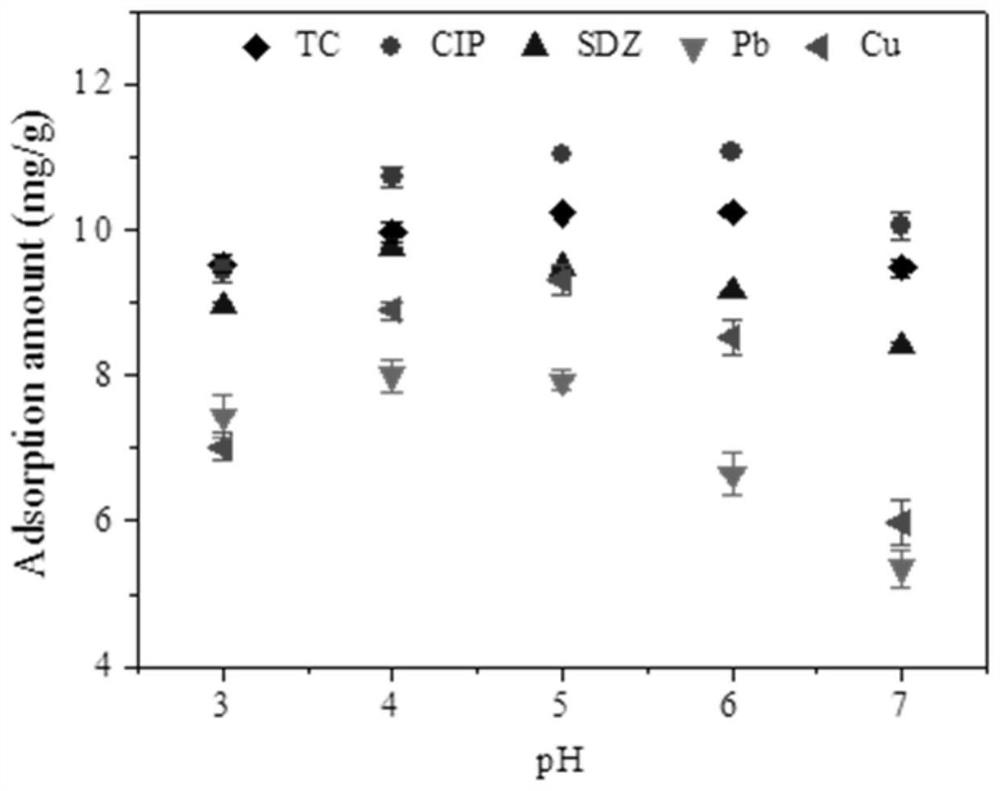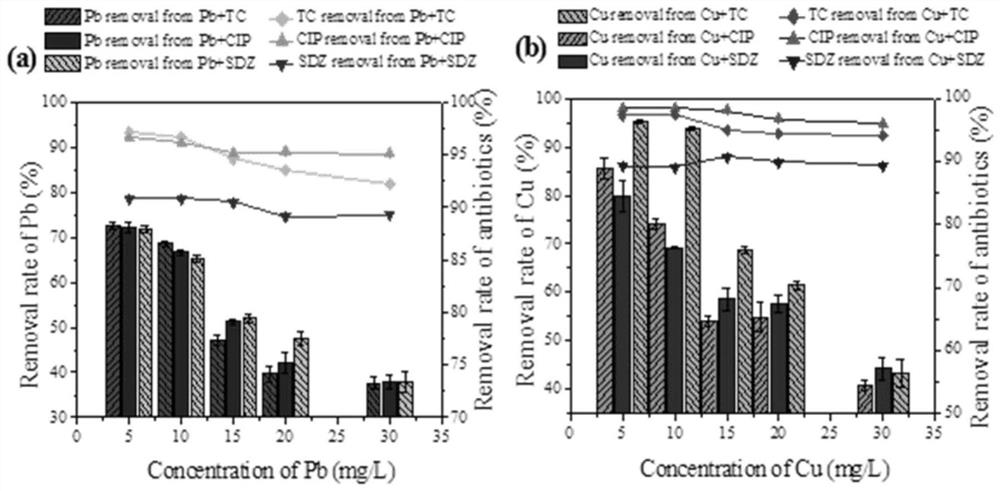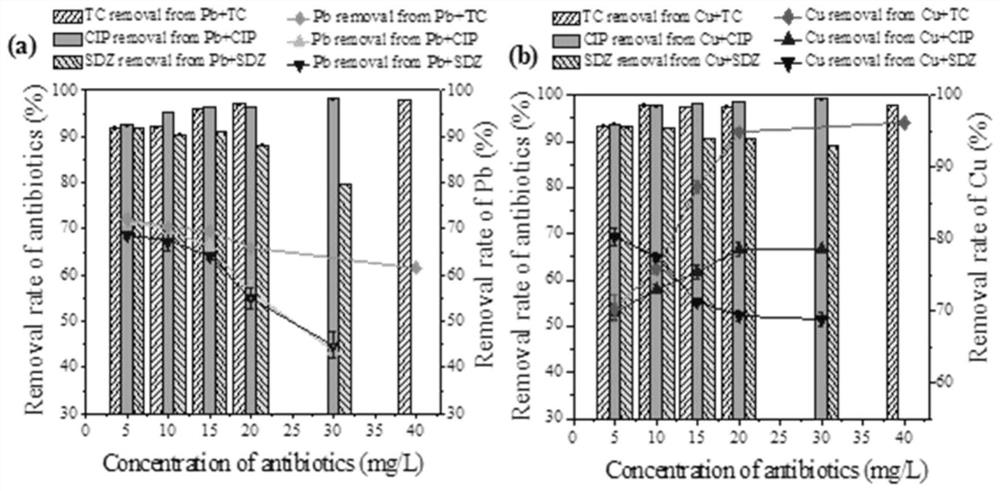Method for synchronously removing antibiotic and heavy metal combined pollution in water
A technology for combined pollution and antibiotics, applied in water pollutants, chemical instruments and methods, water/sewage treatment, etc., can solve the problem of few effective ways to simultaneously remove combined pollution of antibiotics and heavy metals
- Summary
- Abstract
- Description
- Claims
- Application Information
AI Technical Summary
Problems solved by technology
Method used
Image
Examples
Embodiment 1
[0029] Preparation of glucose-based mesoporous carbon materials:
[0030] (1) Dissolve 1g of triblock copolymer F127 in 60mL of deionized water, then drop 11mL of hydrochloric acid and 5g of tetraethyl silicate into the F127 solution successively, stir, and conduct a hydrothermal reaction at 140°C for 24h, centrifuge after the reaction , washed, dried, and then roasted in an air tube furnace at 550°C to obtain white crystals;
[0031] (2) Dissolve 1 g of white crystals and 1.5 g of glucose in deionized water, and drop 80 μL of concentrated H 2 SO 4 (98%), reacted at 105°C for 7h and then reacted at 155°C for 7h, cooled, ground, and sieved to obtain a brown powder after the reaction was completed, and then the brown powder was placed in a nitrogen tube furnace to roast to obtain a black powder;
[0032] (3) adding the black powder into NaOH solution to remove the silicon template, drying and grinding to obtain the glucose-based mesoporous carbon material.
[0033] According ...
Embodiment 2
[0037] Glucose-based mesoporous carbon materials were prepared by the same method as in Example 1.
[0038] 5 groups of simulated water distributions B1 to B6 were prepared with laboratory deionized water. The simulated water distribution B1 of each group contained TC and Pb(II), the concentration of TC was 15mg / L, and the concentration of Pb(II) was 5 and 10 respectively. , 15, 20 and 30mg / L; each group of simulated water distribution B2 contains CIP and Pb(II), the concentration of CIP is 15mg / L, and the concentration of Pb(II) is 5, 10, 15, 20 and 30mg respectively / L; each group of simulated distribution water B3 contains SDZ and Pb(II), the concentration of SDZ is 15mg / L, and the concentration of Pb(II) is 5, 10, 15, 20 and 30mg / L; The distribution water B4 contains TC and Cu(II), the concentration of TC is 15 mg / L, and the concentration of Cu(II) is 5, 10, 15, 20 and 30 mg / L respectively; the simulated distribution water B5 of each group contains CIP and Cu(II), the con...
Embodiment 3
[0041] Glucose-based mesoporous carbon materials were prepared by the same method as in Example 1.
[0042] 5 groups of simulated distribution water C1~C6 were prepared with laboratory deionized water. The simulated distribution water C1 of each group contained TC and Pb(II), the concentration of Pb(II) was 10mg / L, and the concentration of TC was 5 and 10 respectively. , 15, 20 and 40mg / L; each group of simulated distribution water C2 contains CIP and Pb(II), the concentration of Pb(II) is 10mg / L, and the concentration of CIP is 5, 10, 15, 20 and 30mg respectively / L; each group of simulated distribution water C3 contains SDZ and Pb(II), the concentration of Pb(II) is 10mg / L, and the concentration of SDZ is 5, 10, 15, 20 and 30mg / L; The distribution water C4 contains TC and Cu(II), the concentration of Cu(II) is 10 mg / L, and the concentration of TC is 5, 10, 15, 20 and 40 mg / L respectively; the simulated distribution water C5 of each group contains CIP and Cu(II), the concent...
PUM
| Property | Measurement | Unit |
|---|---|---|
| Specific surface area | aaaaa | aaaaa |
| Average pore size | aaaaa | aaaaa |
Abstract
Description
Claims
Application Information
 Login to View More
Login to View More - R&D
- Intellectual Property
- Life Sciences
- Materials
- Tech Scout
- Unparalleled Data Quality
- Higher Quality Content
- 60% Fewer Hallucinations
Browse by: Latest US Patents, China's latest patents, Technical Efficacy Thesaurus, Application Domain, Technology Topic, Popular Technical Reports.
© 2025 PatSnap. All rights reserved.Legal|Privacy policy|Modern Slavery Act Transparency Statement|Sitemap|About US| Contact US: help@patsnap.com



